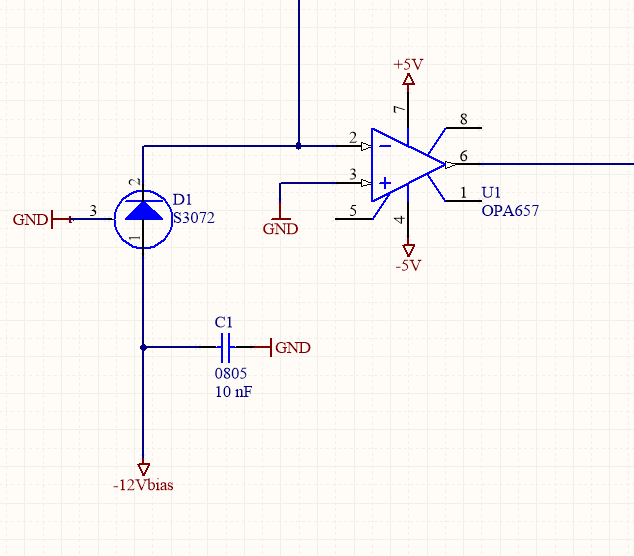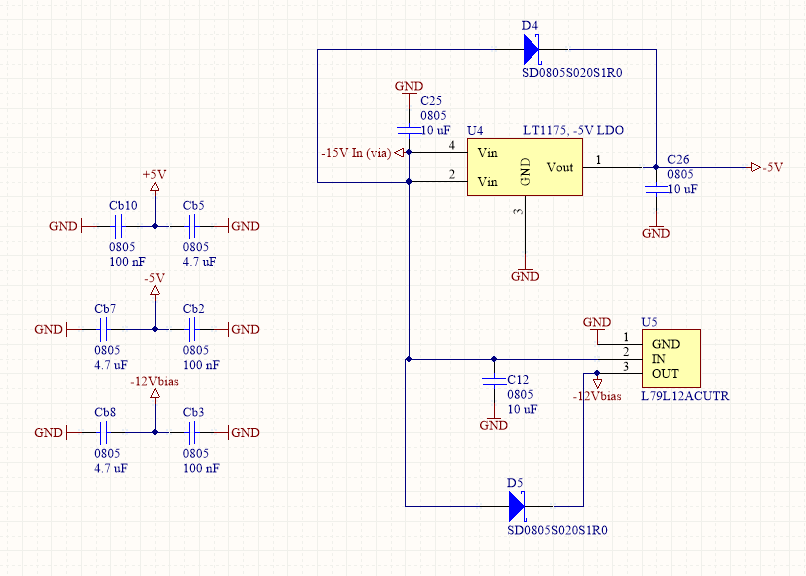I'm powering an op-amp (OPA657) in transimpedance configuration. I externally supply ±15V, with LDOs to drop to ±5V; here I omit the feedback loop for simplicity:
When I turn on the negative rail (-15V) first, my positive-regulating LDO (LDL1117S50R) somehow gets exposed to what I measured at -0.8V at the output, highlighted in the below image:
When I then turn on the positive rail (+15V), the LDO doesn't regulate the incoming +15V; the output just sits at -0.8V. The only way to get it working is power-cycling, and making sure the positive rail comes on first.
What is happening? I had an older TO-220 regulator there before and it was fine.
I realize I'm inadvertently exposing the LDO beyond its absolute maximum negative voltage at its output (according to the datasheet, it's -0.3V). How do I prevent this from happening? I don't want to do any complicated power supply sequencing.
For reference I have snipped the negative rail section:





